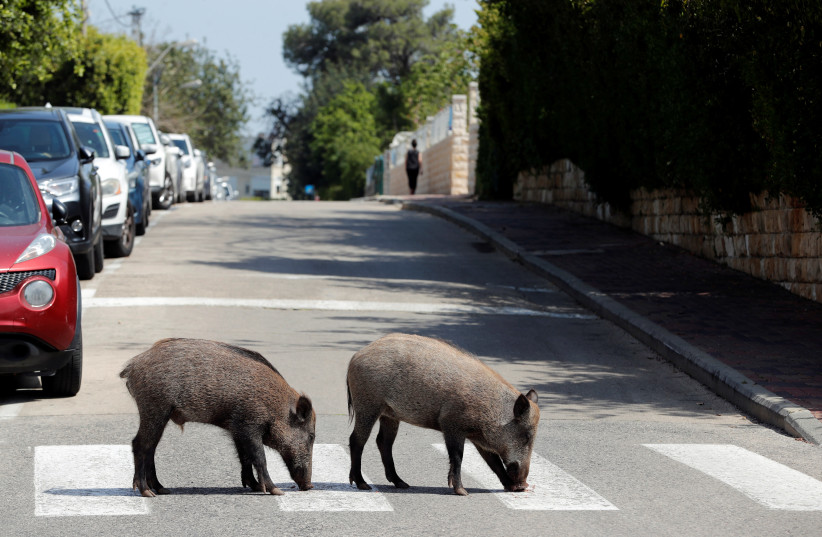Wild animals were able to travel more during lockdown – study
While humans were locked inside, wild animals took the opportunity to travel more widely, according to a new study published on June 8.
The peer-reviewed study, published in the academic journal Science, used the opportunity that the COVID-19 lockdowns provided to study the impact of human behavior on animals.
In 2021, the COVID-19 Bio-Logging Initiative was formed to research and catalogue the movement of wild animals during lockdown. The initiative included researchers who had studied animal movements before the lockdown so that information on changes of behavior could be analyzed.
Tracking the movements of wild animals
A total of 2,300 wild animals were tracked, from 43 different species. These species included elephants, giraffes, bears, deer and cougars.
In Israel, the researchers found that golden jackals had become more active during the day in Tel Aviv.
 Wild boars cross a road in a residential area after the government ordered residents to stay home to fight the spread of coronavirus disease (COVID-19), in Haifa, northern Israel April 16, 2020. (credit: RONEN ZVULUN/REUTERS)
Wild boars cross a road in a residential area after the government ordered residents to stay home to fight the spread of coronavirus disease (COVID-19), in Haifa, northern Israel April 16, 2020. (credit: RONEN ZVULUN/REUTERS)Wild boars also took to the streets more than before in Haifa, according to Reuters.
Red foxes also reappeared in Ashkelon.
What were the researchers’ findings?
The researchers found that mammals travelled 36% closer to roads during lockdown and they travelled 73% further compared to pre-lockdown only a year earlier.
“It may be that mammals ventured closer to roads with reduced levels of traffic, while the absence of humans in the environment may have allowed them to explore new areas,” one of the researchers explained on The Conversation.
The results of the study varied across species, with some animals changing their mobility patterns more than others. One of the researchers theorized that this was because some species adapted to change more readily.
The researchers found that cougars, which normally avoid humans, were venturing closer to human-inhabited areas in California.
Dolphins also appeared in the harbor of Trieste in Italy, which would have normally been too busy for them to make an appearance.
Why is this data important?
“With this knowledge we can start to think of new ways to change our behavior that will positively impact wildlife. For example, we could adjust traffic flows in areas important for animal movement – in some national parks you can only drive during the day to avoid disturbing animals at night,” one of the researchers explained to The Conversation.





Comments are closed.